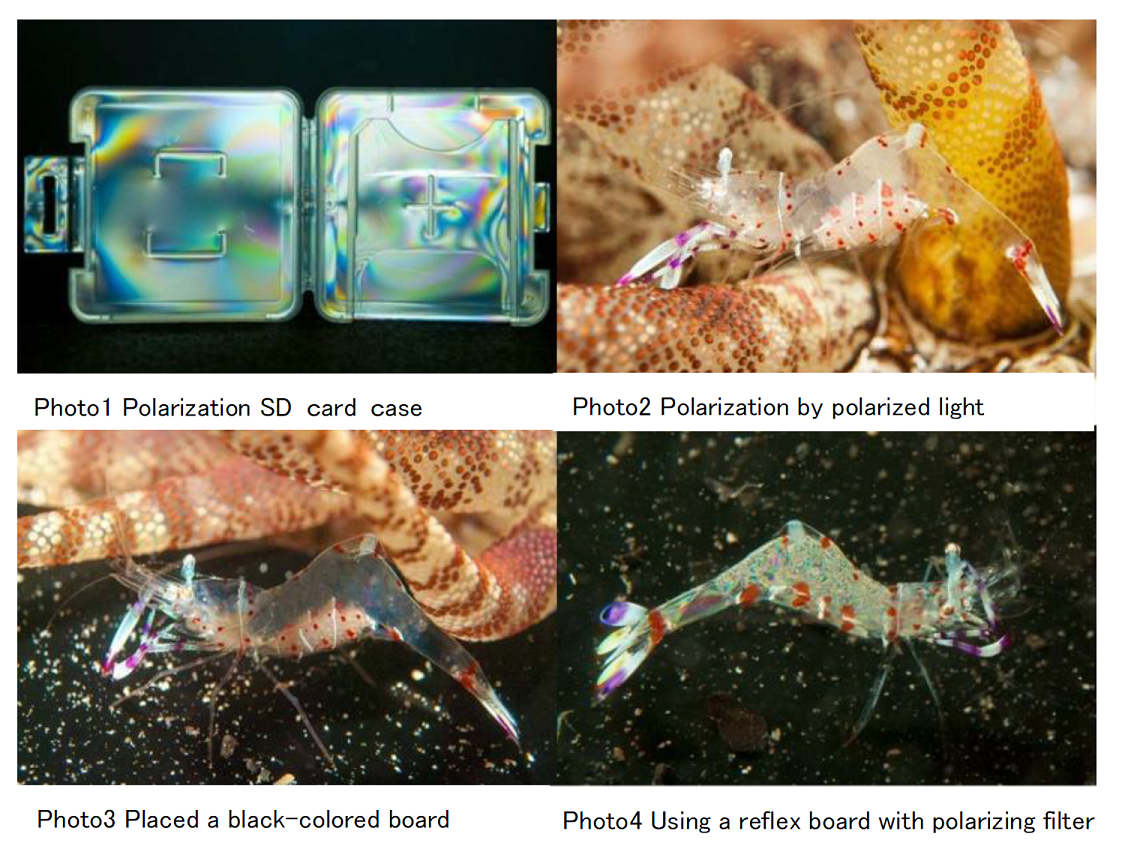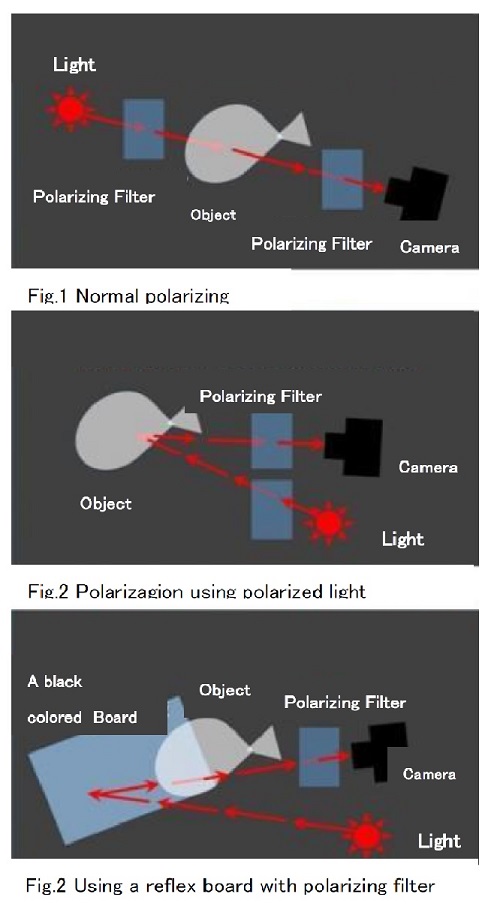The 98th Installment
Observing Underwater Polarization
by Hideki Murakoshi,
Professor, Master Program of Innovation for Design and Engineering
It all started with a polarization imaging system prototype 1) and 2) developed during the Problem-Based Learning Program (PBL) in 2015. I’m fascinated by the beauty of polarized images (Photo 1) and wondered if the technique could be applied to my underwater photography hobby. There are more transparent creatures such as shrimp and fish in the water than you might expect. Imagine viewing these creatures under polarized light.
When polarization is observed under normal conditions, the light source is placed in front of the camera. A polarizing filter is used to create polarized light that is passed through the subject using a second polarizing filter. This is shown in Figure 1. I thought this method impractical for photographing living creatures underwater and therefore decided to use reflected light as shown in Figure 2. I first tried this method in an ordinary dark room and found the colors to be acceptable. The next step was to try it underwater.
The result is shown here in Photo 2 taken of a Dofleinia shrimp. Unfortunately, this is no different from an ordinary photograph. Thinking that reflected light from the background was having an adverse effect, I placed a black-colored board in that background and tried again (Photo 3). Note the head and the seemingly broken back. In these areas, the polarization colors are apparent albeit faintly.
The polarized colors appear in the photo but are disappointing. This was not unexpected. This resulted from background influence elimination with the black-colored board together with the capture of reflected light at the edges of the subject. Could there be some way to better utilize the reflected background light? Perhaps. A reflex board with a polarizing filter was placed behind the subject as shown in Figure 3. This results in polarized light reflected from the reflex board being passed through the subject.
Photo 4 was taken using a reflex board with a polarizing filter. It turned out even better than I expected. The polarized colors were clear and I was very pleased. However, taking photographs on a reflex board such as this is a bit unnatural and hardly beautiful. An additional device was required to bring the color to its natural state. So we again move forward.
It was confirmed that not only Dofleinia shrimp but also Clear Cleaner shrimp and the Glass Goby also yield beautiful color but this discussion is omitted here.
Up to this point, I have described a trial and error approach to observing underwater polarization (photography). I’m curious as to whether or not this could be an interesting research approach. Just thinking about it.
Oops! I forgot something very important!
The polarization imaging system developed in 2015 and mentioned in the first paragraph of this article was studied by members at that time. It is now called the ‘Polamazing 1000’ and has been commercially available since this past spring.


